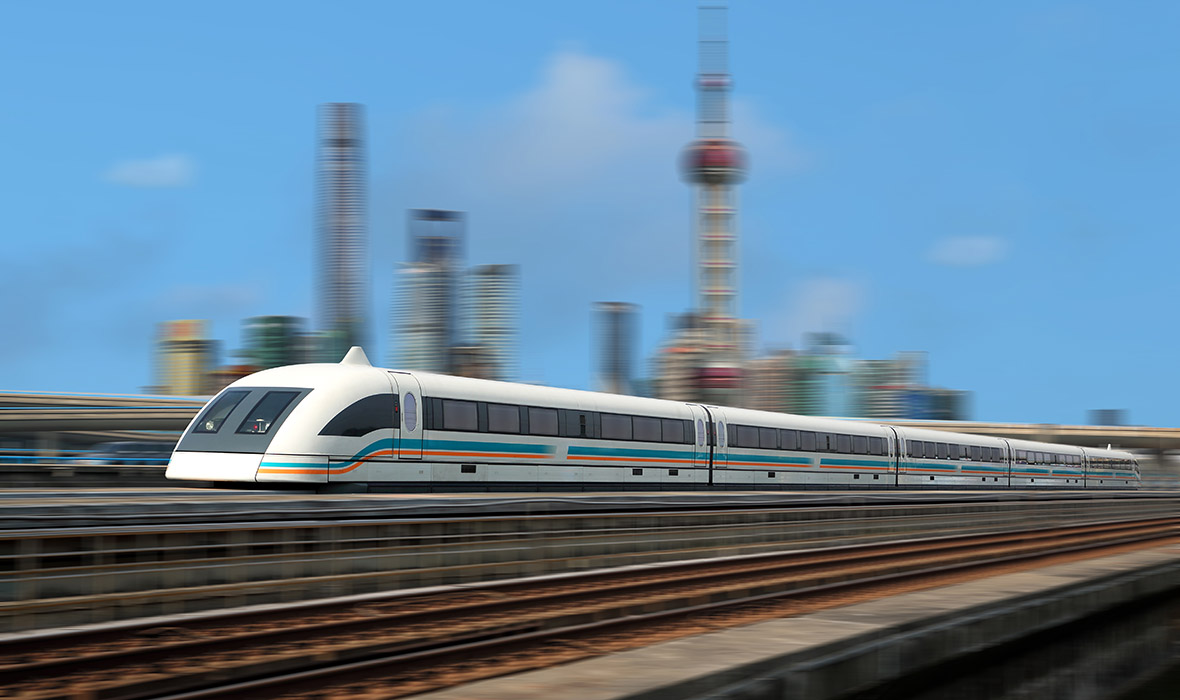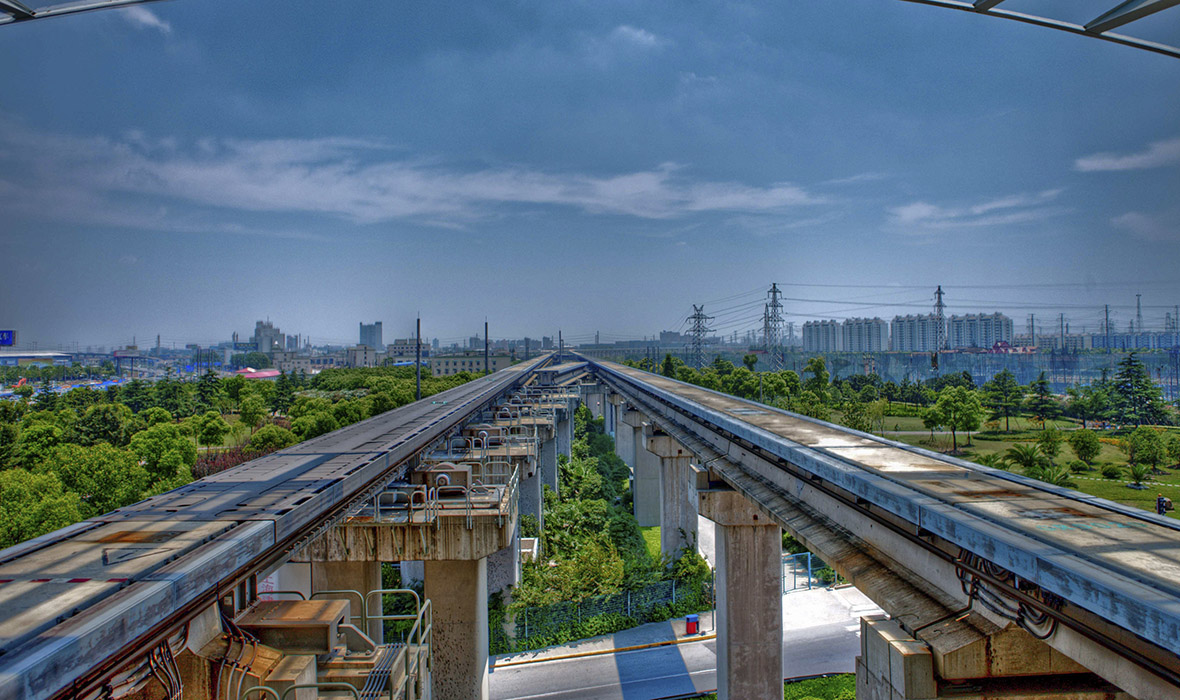WRITTEN BY
Editor, Travelogues
PUBLISHED ON
February 06, 2018
LOCATION
China, Japan, Taiwan, South Korea
There’s no doubt about it: Airports are a hassle. They’re crowded, flights are constantly cancelled, and the experience is akin to a hospital visit. But, certain high-speed rails around the world are replacing popular flight routes, according to a recent report from Bloomberg; they do it cheaper, with more comfort, and without frisking you every 20 feet.
East Asia is the land of the high-speed rail – from China to Japan – and more and more travelers are opting for the comfort and charm of a train over the stress of yet another airport.
CHENGDU TO XIAN

ABOVE: The journey between Chengdu and Xi’an is now less than three hours.
Opening just last month, travelers to China are now able to make their way from the pandas of Chengdu to the Terracotta Warriors over land.
The 16-hour journey between Chengdu and Xi’an is now less than three, moving at 250 kilometers an hour, and as China enters its most important travel season, Chinese New Year, this comes as welcome news.
The train travels through the central Shaanxi Plain and Sichuan Basin, and passengers will see the green hills rolling between the Qinling and Daba Mountains. Travelers can choose from first class, business class, or economy seats for their journey. The 643-kilometer route is the first to run through the Qinling Mountains.
More luxury-based travelers looking for more China-based railway adventures should look to the recent Tibet and China Rail Discovery journey from the Shangri-la Express, exploring both Tibet and Xinjiang in western China. Far from being a high-speed rail, the accommodations are more of a rolling luxury hotel than a replacement for flights.
Tokyo to Osaka

ABOVE: The bullet train, Shinkansen.
Famously, Tokyo has some of the fastest, most efficient high-speed trains in Asia, and with cherry blossom season budding the Tokyo to Osaka line is of particular interest. Also, according to the recent Bloomberg report, going by train is faster when considering “dwell” time.
The high-speed Shinkansen in Japan, also known as the bullet train, provides the fastest, most convenient, and most comfortable transport service from Japan’s capital to the historic city of Osaka, traveling at 320 kilometers per hour and with the world record of 603 kilometers per hour.

ABOVE: Train running through Tokyo.
There are three types of trains on the Tokaido Shinkansen line: Nozomi, which takes 2.5 hours, the Hikari, which covers the distance in just three hours, and the Kodak that stops at every station en route and takes a little more than four hours from Tokyo to Osaka.
The reclining seats in the Shinkansen also have tables, pockets for magazines, and open overhead shelves. The seats are equipped with a footrest and much-needed foot space. Newer trains have a seat warmer for cold winter days.
Beijing to Shanghai

ABOVE: Shanghai skyline behind maglev.
From Beijing to Shanghai, the world’s fastest operating passenger train travels in excess of 300 kilometers per hour, taking as little as 4.5 hours between China’s two major cities. The train has seats that can be converted into a 6-foot-five-inch bed in the business class, but fold-out TV sets and power sockets are available for every passenger on board.

ABOVE: View from Shanghai’s maglev station.
The Beijing to Shanghai rail trip combines China’s urban landscapes with cultivated countryside and mountains in between, allowing travelers to admire the Middle Kingdom’s infrastructure and expansive urban areas as well as a ground-level view of China’s agricultural areas (smog permitting).
This route will also get travelers to the booming city of Hangzhou, host of the G20 in 2016 and known for its romantic and historic West Lake.
Taipei to Kaohsiung

ABOVE: The Taiwan High Speed Rail runs the length of the country.
The Taiwan High-Speed Rail runs at approximately 214 mph, with 12 stations on the route and travels the whole length of the country, from Taichung to Tainan, the oldest city in Taiwan.
At full speed, this train takes just 90 minutes to travel from Taipei to Kaohsiung, compared to more than four hours on a conventional train. The ride offers a great tour of Taiwan’s countryside: bright green landscapes and forested mountain views. There are small luggage storage areas in the front of the cars and some have free WiFi. All Taiwan HSR stations are connected to the local trains and the metro service.
Seoul to Busan

ABOVE: Passengers waiting for high-speed bullet trains at the platform in Seoul.
It’s not as fast as an airplane, or as cheap as a bus, but riding the Korea Train Express – or KTX – from Seoul to Busan is a comfortable alternative to travel the length of South Korea, from the capital to the beach.
The train connects the country’s largest cities, Seoul and Busan, with six stops in between. Running at 305 kilometers an hour (depending on the train), the trip and takes an estimated 2.5 hours from the capital to Busan, which has been gaining in popularity in recent years as an urban beach destination.

ABOVE: The decidedly low-speed Gyeonghwa Station (Cherry Blossom Road) in Busan.
The KTX-III is capable of running from Seoul to Busan in under two hours, and the South Korean government has plans to reduce all travel time to Seoul to under two hours by 2020 for 95 percent of the country.
The KTX trains are also equipped with WiFi so passengers can stay connected. And, hopefully, it’ll be nothing like Train to Busan.



